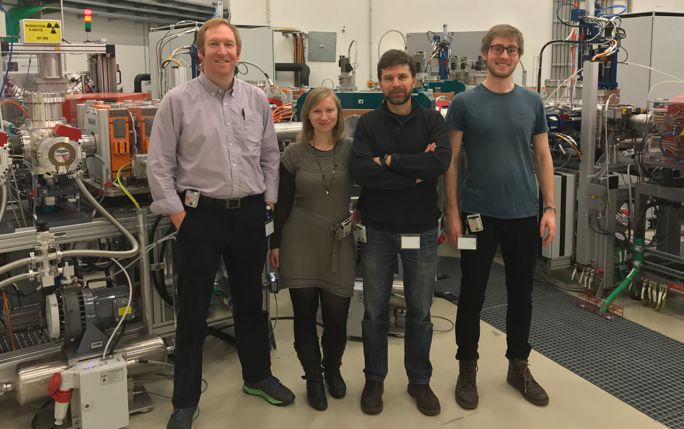Collaboration between UCL and MedAustron

Laurent Kelleter, OMA fellow based at University College London, assisted in conducting the first test of the equipment at high proton energies at the OMA partner facility MedAustron. In the first week of March, a team from UCL, led by Dr Simon Jolly, had the opportunity to make measurements of the MedAustron clinical proton beam with their prototype proton calorimetry detector.
The goal of the UCL project is to adapt existing high energy physics detector technology for the precise measurement of proton energy in a clinical setting. This would allow improved verification of the proton beam energy and range during daily Quality Assurance (QA) checks and could also provide the energy measurement stage for a proton CT imaging system. In the past, detector performance tests have been conducted with the 60 MeV proton beam at the Clatterbridge Cancer Centre in the UK, a partner organisation of the OMA network. In contrast, the MedAustron research beamline provided the opportunity to make measurements at energies up to 252 MeV for the first time. Another first was that the UCL group were the first external collaborators to make use of the MedAustron research beamline: as such, the visit was highly anticipated by everyone involved. As well as a tour around the brand new facility, the MedAustron Medical Physics team also provided the opportunity for observing the morning in-room QA procedures, something of particular relevance to the UCL detector. In addition, Simon gave a talk about the proton calorimetry research project at UCL and the current status of proton beam therapy in the UK. Measurements were made with the detector during two night shifts: first to establish the necessary experimental beam conditions; then to characterise the performance of the detector at a range of energies up to 252 MeV. In addition, the high rate performance of the detector was also tested to determine the rate limit with the existing setup.
The preliminary results show promising behaviour of the detector even in the upper range of clinical relevant proton energies. An energy resolution below 1% FWHM at higher energies confirmed the most optimistic expectations, as well as matching extremely well with detector simulations carried out before the trip. Further analysis especially on the rate-dependent performance is ongoing.
We are very thankful for the huge support we received from MedAustron staff, including OMA fellow Andrea de Franco, and we are looking forward to a close collaboration in the future.